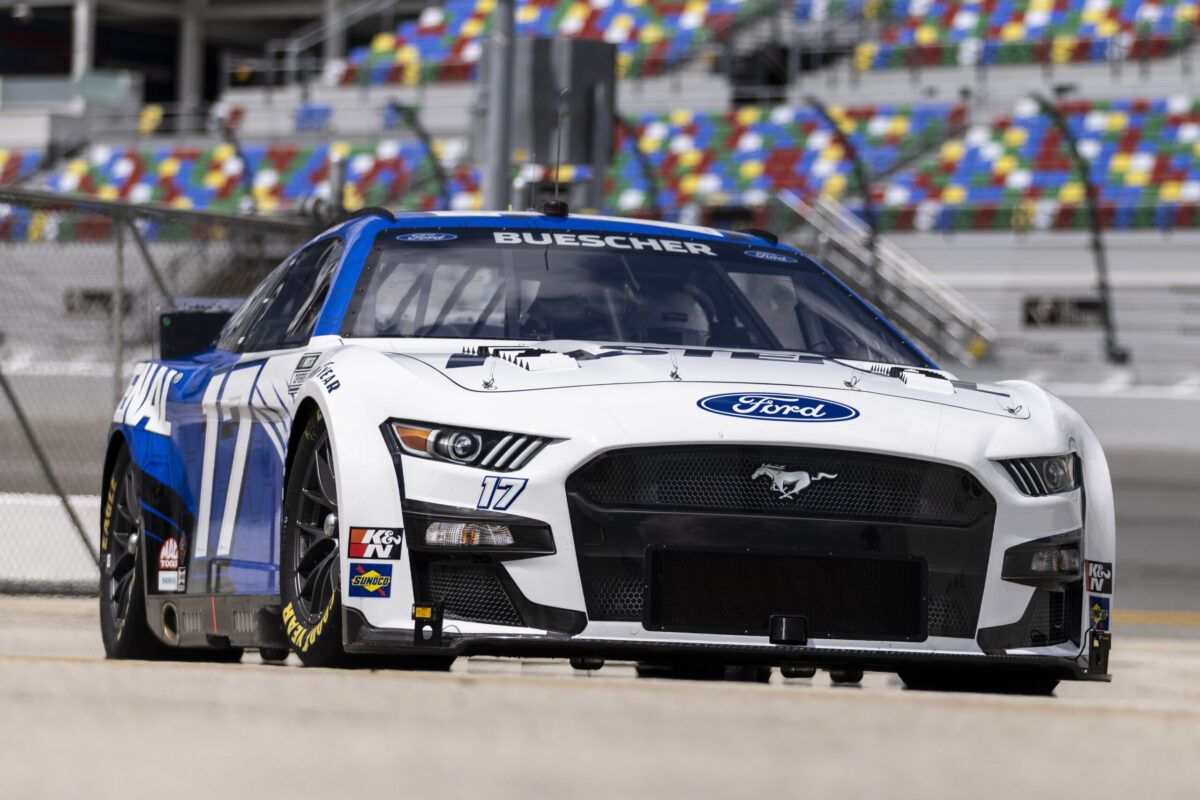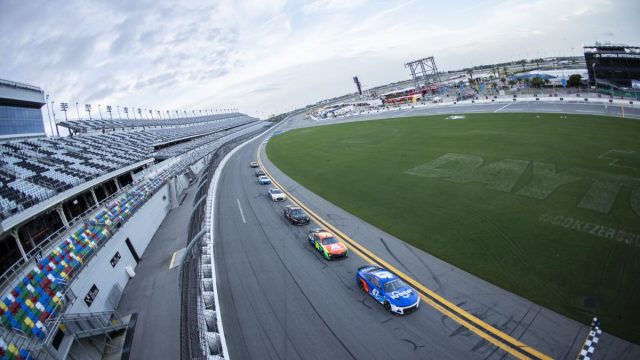NASCAR’s Aero Map Secrets: Unveiling NASCAR’s aerodynamic secrets reveals the meticulous optimization formula underpinning aero maps, pivotal for gaining competitive edges on the track. Next-Gen cars have shifted team strategies towards emphasizing aerodynamics through wind tunnel testing and simulations, allowing for aero map optimization. Understanding components like ride height adjustments and aerodynamic aids offer insights into enhancing speed and handling. Efficient aerodynamic balance and downforce management become crucial for performance, with strategies like drafting playing a key role.
The interplay between aero push, stability, and grip demonstrates the intricate dance drivers and teams must master. Mastering NASCAR’s aerodynamic intricacies holds the key to unlocking podium potential.
Key Takeaways
- Aero maps optimize aerodynamic performance.
- Insights on airflow, pressure, and grip.
- Utilize wind tunnel testing and CFD simulations.
- Adjust ride height and wing angle for balance.
- Enhance competitiveness through iterative refinement.
Next-Gen Cars and Aero Maps
The introduction of Next-Gen cars in NASCAR has brought about a significant shift in race team strategies, particularly emphasizing the crucial role of aerodynamics through the utilization of aero maps. With the traditional method of making component-wise tweaks becoming obsolete, teams are now focusing on optimizing their race cars through a deeper understanding of aerodynamics. Aero maps play a pivotal role in this optimization process by providing detailed insights into how air flows over and around the race car, influencing its performance on the track.
Next-Gen cars feature a more modern design that places a greater emphasis on aerodynamics, making it essential for teams to leverage aero maps to fine-tune their setups. By analyzing data obtained from wind tunnel testing and computational fluid dynamics simulations, teams can create customized aero maps that help them maximize downforce, reduce drag, and enhance overall performance.
In the context of NASCAR, where small adjustments can make a significant difference in race outcomes, the use of aero maps has become a cornerstone of race team strategies. Teams that can interpret and apply the insights gleaned from these maps effectively gain a competitive edge on the track, allowing them to optimize their cars for specific race conditions and gain an advantage over their rivals. As the sport continues to evolve, mastering the art of aero map optimization will be crucial for teams looking to stay ahead in the highly competitive world of NASCAR racing.

Understanding Aero Maps
An integral tool in modern race car optimization, the aero map provides detailed insights into the aerodynamic performance of a vehicle by analyzing airflow patterns and their impact on grip and overall handling. Understanding aero maps involves delving into the intricacies of aerodynamics and how they influence a race car’s behavior on the track.
Here are three essential aspects to consider:
- Airflow Visualization: Aero maps offer a visual representation of how air interacts with the vehicle’s body, highlighting areas of high and low pressure. By studying these patterns, engineers can optimize the car’s design to enhance downforce and minimize drag, ultimately improving performance.
- Grip Estimation: Through complex calculations and simulations, aero maps help estimate the amount of grip available to the driver under varying conditions. This information is crucial for setting up the car to achieve the optimal balance between grip and speed, maximizing cornering capabilities.
- Validation and Iteration: While aero maps provide valuable data, their accuracy is validated through on-track testing. Engineers use this feedback to refine the aero map, making adjustments to improve the car’s performance based on real-world results. This iterative process ensures that the aero map aligns with the car’s actual behavior, leading to enhanced competitiveness on race day.
Components of Aero Maps
Examining the intricate relationship between geometrical and aerodynamic properties, the components of aero maps provide crucial insights into predicting a car’s behavior through various setup adjustments. These components typically include parameters such as front and rear ride height, rear wing angle, and other aerodynamic aids. Each of these elements plays a significant role in determining how the car interacts with the air around it, ultimately affecting its performance on the track.
Front and rear ride height are key components in an aero map, influencing the airflow underneath and around the car. Adjusting these heights can change the amount of downforce and drag the car experiences, impacting its overall handling and speed. The rear wing angle is another critical factor, as it directly affects the amount of downforce generated at the rear of the car. By manipulating this angle, teams can fine-tune the balance between grip and speed, optimizing the car’s performance for different track conditions.
Additionally, other aerodynamic aids such as splitters, diffusers, and vortex generators also play a role in shaping the aero map. These components work together to manage airflow and enhance overall performance. Understanding how each of these elements contributes to the car’s aerodynamic profile is essential for teams looking to maximize their speed and handling on race day.
Understanding Aerodynamics in NASCAR
Analyzing the intricate aerodynamic principles at play in NASCAR racecars reveals a complex yet fascinating interplay between air dynamics and performance optimization. In NASCAR, aerodynamics play a crucial role in shaping the performance of the racecars on the track. Here are three key aspects to help understand aerodynamics in NASCAR:
- Aerodynamic Balance: Achieving the right balance between aerodynamic downforce and aerodynamic drag is essential in NASCAR. Downforce is the force that pushes the car onto the track, increasing grip and stability in corners. However, excessive downforce can lead to increased drag, slowing down the car on straightaways. Finding the optimal balance is a constant challenge for teams as they seek to maximize speed without compromising stability.
- Airflow Management: Efficiently managing the airflow around the car is critical for reducing drag and improving overall performance. NASCAR teams utilize various aerodynamic components such as splitters, spoilers, and side skirts to manipulate the airflow and create optimal aerodynamic conditions. By controlling how the air flows over and around the car, teams can enhance cornering capabilities and straight-line speed.
- Drafting: Drafting is a strategic aerodynamic technique used by drivers to reduce air resistance and increase speed. By closely following another car, a driver can benefit from reduced drag, allowing them to gain momentum and make a pass. Understanding the intricacies of drafting and knowing when to utilize this technique can be the difference between winning and losing in NASCAR.
Aero Push and Downforce
At high speeds in NASCAR racing, the interaction between aero push and downforce becomes a critical factor influencing car stability and performance on the track. Aero push, also known as being ‘tight’ by drivers, occurs when the trailing car experiences disrupted airflow from the leading car, causing a loss of stability. To counteract this effect, drivers strategically draft to benefit from the vacuum created in the wake of the leading car. Maintaining an optimal distance is crucial to prevent the vacuum from pushing the trailing car upwards.
On the other hand, downforce plays a significant role in enhancing a car’s grip on the track. As the vehicle moves through the air, pressure imbalances create downforce, which aids in cornering at higher speeds. However, the same downforce that improves traction also generates aerodynamic drag. Drag occurs when the air behind the car becomes turbulent, resisting the car’s forward motion and potentially slowing it down.
Balancing the benefits of downforce with the drawbacks of drag is a key challenge for NASCAR teams seeking to optimize their cars’ performance. Understanding and managing the interplay between aero push and downforce is essential for drivers and crew chiefs looking to gain a competitive edge on the racetrack.

News in Brief
NASCAR’s aero maps play a crucial role in optimizing the performance of Next-Gen cars on the track.
By understanding the components and dynamics of aerodynamics in NASCAR, teams can fine-tune their cars to achieve the perfect balance of downforce and aerodynamic efficiency.
Aero push and downforce are key factors that teams must consider when developing their aero maps to gain a competitive edge in the fast-paced world of NASCAR racing.
Our Reader’s Queries
Q: What is the science behind NASCAR?
A: Newton’s laws of motion form the bedrock of NASCAR physics, dictating the movement of race cars. Inertia, outlined in Newton’s first law, is key during acceleration, while the third law’s reaction forces come into play during collisions. These laws underpin every aspect of NASCAR, ensuring precision and safety on the track.
Q: Are NASCAR cars aerodynamic?
A: Aerodynamics are crucial in NASCAR. Airflow, speed, and racing advantages are scrutinized in every race.
Q: How powerful is a NASCAR?
A: Sprint Cup cars, unrestricted, generate 750+ horsepower (560 kW), achieving speeds surpassing 200 mph.
Also Read: Next Gen Cup Series: Striking the Balance between Power and Aerodynamics
